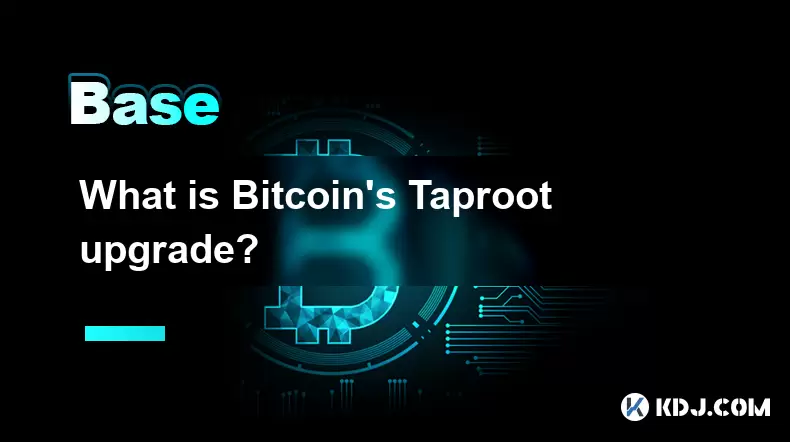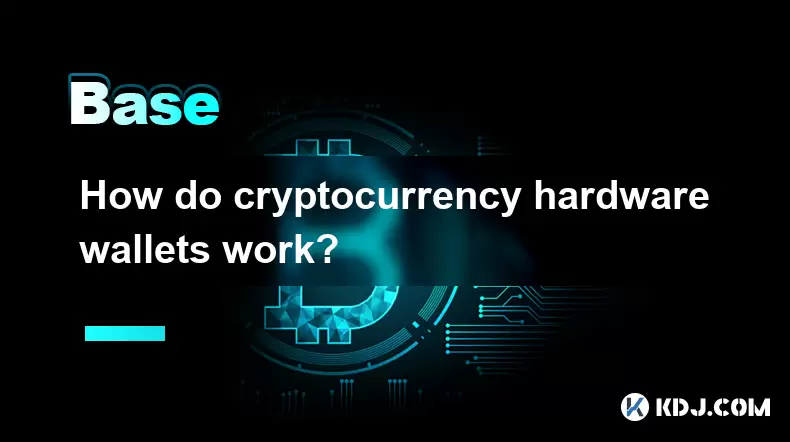-
 Bitcoin
Bitcoin $106,754.6083
1.33% -
 Ethereum
Ethereum $2,625.8249
3.80% -
 Tether USDt
Tether USDt $1.0001
-0.03% -
 XRP
XRP $2.1891
1.67% -
 BNB
BNB $654.5220
0.66% -
 Solana
Solana $156.9428
7.28% -
 USDC
USDC $0.9998
0.00% -
 Dogecoin
Dogecoin $0.1780
1.14% -
 TRON
TRON $0.2706
-0.16% -
 Cardano
Cardano $0.6470
2.77% -
 Hyperliquid
Hyperliquid $44.6467
10.24% -
 Sui
Sui $3.1128
3.86% -
 Bitcoin Cash
Bitcoin Cash $455.7646
3.00% -
 Chainlink
Chainlink $13.6858
4.08% -
 UNUS SED LEO
UNUS SED LEO $9.2682
0.21% -
 Avalanche
Avalanche $19.7433
3.79% -
 Stellar
Stellar $0.2616
1.64% -
 Toncoin
Toncoin $3.0222
2.19% -
 Shiba Inu
Shiba Inu $0.0...01220
1.49% -
 Hedera
Hedera $0.1580
2.75% -
 Litecoin
Litecoin $87.4964
2.29% -
 Polkadot
Polkadot $3.8958
3.05% -
 Ethena USDe
Ethena USDe $1.0000
-0.04% -
 Monero
Monero $317.2263
0.26% -
 Bitget Token
Bitget Token $4.5985
1.68% -
 Dai
Dai $0.9999
0.00% -
 Pepe
Pepe $0.0...01140
2.44% -
 Uniswap
Uniswap $7.6065
5.29% -
 Pi
Pi $0.6042
-2.00% -
 Aave
Aave $289.6343
6.02%
What is encryption strength?
Cryptocurrency security hinges on strong encryption; key size, algorithm design, and vulnerability absence all impact its strength. AES-256 and ECC with large key sizes are currently considered highly secure, crucial for protecting wallets and transactions from attacks.
Mar 14, 2025 at 02:50 am

Key Points:
- Encryption strength refers to the resistance of an encryption algorithm to attacks aimed at breaking the encryption and revealing the plaintext data. This resistance is directly related to the computational resources required to crack it.
- Factors influencing encryption strength include key size, algorithm design, and the existence of known vulnerabilities. Larger key sizes generally lead to stronger encryption.
- Different cryptographic algorithms offer varying levels of strength, and the appropriate choice depends on the sensitivity of the data being protected.
- Understanding encryption strength is crucial in the cryptocurrency world for securing wallets, transactions, and private keys. Weak encryption can lead to significant financial losses.
What is Encryption Strength?
Encryption strength, in the context of cryptocurrencies, is a measure of how resistant a cryptographic algorithm is to being broken. This resistance is determined by factors like the computational power needed to decipher the encrypted data (the ciphertext) and reveal the original data (the plaintext). A strong encryption algorithm requires immense computational power and time to crack, making it practically impossible for attackers to break within a reasonable timeframe.
Factors Affecting Encryption Strength:
Several factors contribute to the overall strength of an encryption algorithm. One of the most crucial factors is the key size. Larger key sizes, typically measured in bits (e.g., 128-bit, 256-bit), significantly increase the computational complexity for attackers. A 256-bit key offers exponentially more protection than a 128-bit key.
The algorithm's design is equally vital. A well-designed algorithm is resistant to various attack techniques, including brute-force attacks, known-plaintext attacks, and chosen-plaintext attacks. Algorithms with proven track records and robust mathematical foundations generally offer superior strength.
The presence or absence of known vulnerabilities significantly impacts an algorithm's strength. Cryptographic algorithms are constantly scrutinized by security researchers. If vulnerabilities are discovered and exploited, the encryption strength is compromised. Regular updates and patching are essential to address these vulnerabilities.
Types of Encryption and Their Strength:
Various encryption algorithms are used in the cryptocurrency space, each offering different levels of security. Symmetric encryption, like AES (Advanced Encryption Standard), uses the same key for encryption and decryption. AES with a 256-bit key is widely considered very strong.
Asymmetric encryption, also known as public-key cryptography, uses a pair of keys: a public key for encryption and a private key for decryption. RSA (Rivest–Shamir–Adleman) and ECC (Elliptic Curve Cryptography) are examples of asymmetric encryption algorithms commonly used in cryptocurrencies for digital signatures and secure key exchange. ECC is generally considered more efficient than RSA for a given level of security. The strength of these algorithms depends on the key size and the specific implementation.
Encryption Strength in Cryptocurrencies:
The importance of encryption strength cannot be overstated in the cryptocurrency world. Cryptocurrencies rely heavily on cryptography to secure transactions, protect private keys, and maintain the integrity of the blockchain. Weak encryption can have devastating consequences.
For example, weak encryption of a cryptocurrency wallet could allow attackers to steal funds. Similarly, vulnerabilities in the encryption used for transactions could enable double-spending or other malicious activities. Therefore, choosing robust and well-established encryption algorithms is paramount for security in the cryptocurrency space.
The Role of Hashing Algorithms:
While not directly encryption, hashing algorithms are crucial in cryptocurrencies. Hash functions take an input (e.g., a transaction) and produce a fixed-size output (the hash). These hashes are used for data integrity verification and are essential for the security of blockchain technology. Strong hashing algorithms, such as SHA-256 and SHA-3, are resistant to collisions (finding two different inputs that produce the same hash). The strength of these algorithms impacts the security of the entire cryptocurrency system.
Key Considerations for Encryption Strength:
When choosing encryption for cryptocurrency-related applications, several factors should be considered. The sensitivity of the data being protected dictates the required level of encryption strength. For example, protecting private keys requires significantly stronger encryption than securing less sensitive data.
The computational resources available also play a role. While stronger encryption is preferable, it might come at the cost of increased processing time and power consumption. Finding a balance between security and performance is crucial. Regular security audits and updates are essential to ensure the ongoing strength of the encryption used.
Common Questions and Answers:
Q: What is the strongest encryption algorithm currently available?
A: There's no single "strongest" algorithm. The strength depends on the key size and implementation. AES-256 and ECC with sufficiently large key sizes are generally considered very strong, but the security landscape is constantly evolving, and new attacks may be discovered in the future.
Q: How can I determine the encryption strength of a cryptocurrency wallet?
A: The wallet's documentation should specify the encryption algorithm and key size used. Look for wallets that use well-established algorithms like AES-256 or ECC with robust key management practices. Independent security audits of the wallet software can provide additional assurance.
Q: Is 128-bit encryption still considered secure for cryptocurrencies?
A: While 128-bit encryption was once considered strong, it's generally recommended to use at least 256-bit encryption for cryptocurrency applications, especially for protecting private keys and sensitive data. The increased computational power available today makes breaking 128-bit encryption significantly easier than in the past.
Q: What happens if a cryptocurrency's encryption is broken?
A: If the encryption used by a cryptocurrency is broken, it could lead to catastrophic consequences, including theft of funds, manipulation of transactions, and a complete compromise of the system's integrity. The impact would depend on the specifics of the vulnerability and the extent of its exploitation.
Q: How often should I update my cryptocurrency wallet software?
A: Regularly updating your wallet software is crucial for security. Updates often include patches for known vulnerabilities and improvements to the encryption algorithms and security protocols. Check for updates frequently and install them promptly.
Disclaimer:info@kdj.com
The information provided is not trading advice. kdj.com does not assume any responsibility for any investments made based on the information provided in this article. Cryptocurrencies are highly volatile and it is highly recommended that you invest with caution after thorough research!
If you believe that the content used on this website infringes your copyright, please contact us immediately (info@kdj.com) and we will delete it promptly.
- Riding the Solana Wave: Spot ETFs and Investment Opportunities
- 2025-06-18 22:45:12
- Hedera (HBAR) and 2030 Wealth: A Realistic Outlook
- 2025-06-18 23:05:12
- XRP Lawsuit: Settlement Hopes Rise with Bill Morgan's Insights
- 2025-06-18 23:22:17
- Solaxy Presale: Is This Crypto Explosion the Next Big Thing on Solana?
- 2025-06-18 22:25:13
- Alchemy Pay, Ripple, and RLUSD: A New Era for Crypto Payments?
- 2025-06-18 22:45:12
- QBI Token, AI Fintech, and Cloud Deployment: A New Era in Finance
- 2025-06-18 23:24:19
Related knowledge

What is the token destruction mechanism in blockchain?
Jun 15,2025 at 12:14pm
Understanding Token Destruction in BlockchainToken destruction, often referred to as token burning, is a mechanism used within blockchain ecosystems to permanently remove a certain number of tokens from circulation. This process typically involves sending tokens to an irretrievable wallet address — commonly known as a burn address or eater address — whi...

What is Bitcoin's Taproot upgrade?
Jun 14,2025 at 06:21am
Understanding the Basics of Bitcoin's Taproot UpgradeBitcoin's Taproot upgrade is a significant soft fork improvement introduced to enhance privacy, scalability, and smart contract functionality on the Bitcoin network. Activated in November 2021, Taproot represents one of the most notable upgrades since SegWit (Segregated Witness) in 2017. At its core, ...

How do cryptocurrency hardware wallets work?
Jun 14,2025 at 11:28am
Understanding the Basics of Cryptocurrency Hardware WalletsCryptocurrency hardware wallets are physical devices designed to securely store users' private keys offline, offering a high level of protection against online threats. Unlike software wallets that remain connected to the internet, hardware wallets keep private keys isolated from potentially com...

What is a state channel in blockchain?
Jun 18,2025 at 02:42am
Understanding the Concept of a State ChannelA state channel is a mechanism in blockchain technology that enables participants to conduct multiple transactions off-chain while only interacting with the blockchain for opening and closing the channel. This technique enhances scalability by reducing congestion on the main chain, allowing faster and cheaper ...

What is Bitcoin's segregated witness address?
Jun 16,2025 at 04:14pm
Understanding the Concept of Segregated Witness (SegWit)Bitcoin's Segregated Witness (SegWit) is a protocol upgrade implemented in 2017 to improve the scalability and efficiency of Bitcoin transactions. SegWit addresses were introduced as part of this upgrade, designed to separate (or 'segregate') signature data from transaction data. This separation al...

How to safely transfer large amounts of cryptocurrency?
Jun 17,2025 at 03:35pm
Understanding the Risks Involved in Transferring Large AmountsTransferring large amounts of cryptocurrency involves a unique set of risks that differ from regular transactions. The most critical risk is exposure to theft via compromised private keys or phishing attacks. Additionally, network congestion can lead to delayed confirmations, and incorrect wa...

What is the token destruction mechanism in blockchain?
Jun 15,2025 at 12:14pm
Understanding Token Destruction in BlockchainToken destruction, often referred to as token burning, is a mechanism used within blockchain ecosystems to permanently remove a certain number of tokens from circulation. This process typically involves sending tokens to an irretrievable wallet address — commonly known as a burn address or eater address — whi...

What is Bitcoin's Taproot upgrade?
Jun 14,2025 at 06:21am
Understanding the Basics of Bitcoin's Taproot UpgradeBitcoin's Taproot upgrade is a significant soft fork improvement introduced to enhance privacy, scalability, and smart contract functionality on the Bitcoin network. Activated in November 2021, Taproot represents one of the most notable upgrades since SegWit (Segregated Witness) in 2017. At its core, ...

How do cryptocurrency hardware wallets work?
Jun 14,2025 at 11:28am
Understanding the Basics of Cryptocurrency Hardware WalletsCryptocurrency hardware wallets are physical devices designed to securely store users' private keys offline, offering a high level of protection against online threats. Unlike software wallets that remain connected to the internet, hardware wallets keep private keys isolated from potentially com...

What is a state channel in blockchain?
Jun 18,2025 at 02:42am
Understanding the Concept of a State ChannelA state channel is a mechanism in blockchain technology that enables participants to conduct multiple transactions off-chain while only interacting with the blockchain for opening and closing the channel. This technique enhances scalability by reducing congestion on the main chain, allowing faster and cheaper ...

What is Bitcoin's segregated witness address?
Jun 16,2025 at 04:14pm
Understanding the Concept of Segregated Witness (SegWit)Bitcoin's Segregated Witness (SegWit) is a protocol upgrade implemented in 2017 to improve the scalability and efficiency of Bitcoin transactions. SegWit addresses were introduced as part of this upgrade, designed to separate (or 'segregate') signature data from transaction data. This separation al...

How to safely transfer large amounts of cryptocurrency?
Jun 17,2025 at 03:35pm
Understanding the Risks Involved in Transferring Large AmountsTransferring large amounts of cryptocurrency involves a unique set of risks that differ from regular transactions. The most critical risk is exposure to theft via compromised private keys or phishing attacks. Additionally, network congestion can lead to delayed confirmations, and incorrect wa...
See all articles

























































































